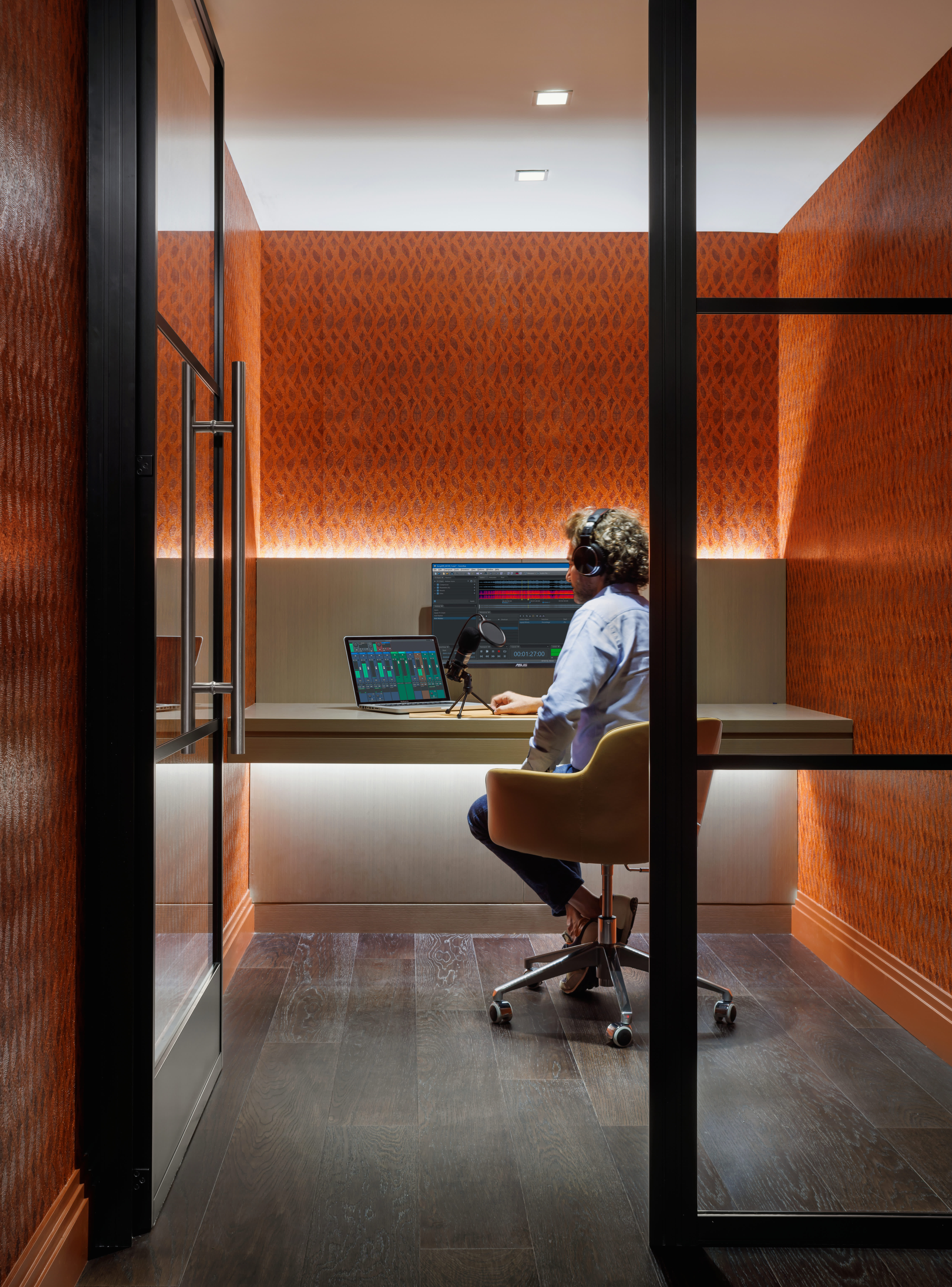
The latest must-have amenity in luxury New York City apartment buildings: a designated coworking space for remote workers.
Apartment developers are building out private offices, conference rooms and even podcasting booths to capitalize on a lingering work-from-home trend. Even as workplaces reopen, 59% of employees are still working from home three or more days a week, according to a recent Pew Research Center survey. More than a third of workers with jobs that can be done remotely are still working from home full time, the survey found.
“Coworking spaces were not a primary focus prior to the pandemic, but the pandemic shifts everything,” said Matthew Villetto, executive vice president of Douglas Elliman Development Marketing.
Tenants are increasingly looking for a “third space” where they can work away from both home and the office but are still close by. And what’s closer than an elevator ride away.
“A coworking space was actually the top of my list when I was touring,” said Lauren Wells, a fashion designer and a resident at 420 Kent in Williamsburg. “When I need to meet with a customer for work, I can just bring up some of my work create a little space up there.”
At buildings such as The Reserve, a new luxury development project in East Harlem; 450 Washington, a Tribeca condominium; and One Wall Street, the city’s largest-ever office-to-residential condominium in the Financial District, developers are adding phone booths, printing services, ergonomic chairs, audiovisual equipment, high-speed internet and full-size kitchens.
Rent at each of the luxury rental buildings can run up to $7,950 per month for a one-bedroom apartment, while a studio for sale can cost nearly $1 million.
For remote workers like Jessica Dang, a resident at The Set in Hudson Yards and the founder of the weight management and lifestyle brand the Essentialist Method, the price tag is worth it.
“I’ve worked in coffee shops, Soho House and WeWork before, but this is a completely different experience because it feels like your own private office,” Dang said.
She also said the coworking spaces offer a unique social aspect.
“You need a second, or third space outside of your apartment, or else you’ll go crazy. With a coworking space that’s right upstairs, I can see other people from the building,” she said.
Shifting focus
Real estate trend watchers say the coworking concept is likely to stick, prompting more apartment buildings to follow suit.
“I think as the work-from-home trend settles in, there’s going to just be increased pressure on residential buildings to pick up that slack,” according to Richard Dubrow, director of marketing at Macklowe Properties, which was behind One Wall Street.
“A lot of buildings will be reconfiguring amenity spaces for the demands of their residents, so it’s just the new reality,” he said.
The rise in residential working space comes against the backdrop of struggling public coworking spaces. On Tuesday, WeWork issued a “going concern” warning about its ability to survive, noting its coworking clients are canceling memberships faster than expected.
Developers’ new focus on workspace amenities in the residential space could also weigh on the city’s commercial real estate market.
In New York City, the office vacancy rate rose to a record 17.4% in the first quarter of 2023, according to a report by commercial real estate firm JLL. As demand for residential coworking spaces continues to rise and workers remain reluctant to return to the office, building owners may be forced to rethink how they grapple with vacant office spaces.
“If office spaces are vacant, clearly, landlords are going to be incentivized to figure out how to use that space,” said Realtor.com Economic Data Analyst Hannah Jones. “This creates opportunities on how you lean into flexibility, whether it be converting office space into something a little more flexible like a coworking space or into residential space.”
- SEO Powered Content & PR Distribution. Get Amplified Today.
- PlatoData.Network Vertical Generative Ai. Empower Yourself. Access Here.
- PlatoAiStream. Web3 Intelligence. Knowledge Amplified. Access Here.
- PlatoESG. Automotive / EVs, Carbon, CleanTech, Energy, Environment, Solar, Waste Management. Access Here.
- PlatoHealth. Biotech and Clinical Trials Intelligence. Access Here.
- ChartPrime. Elevate your Trading Game with ChartPrime. Access Here.
- BlockOffsets. Modernizing Environmental Offset Ownership. Access Here.
- Source: https://www.cnbc.com/2023/08/10/luxury-nyc-buildings-offer-coworking-spaces-as-remote-work-lingers.html



